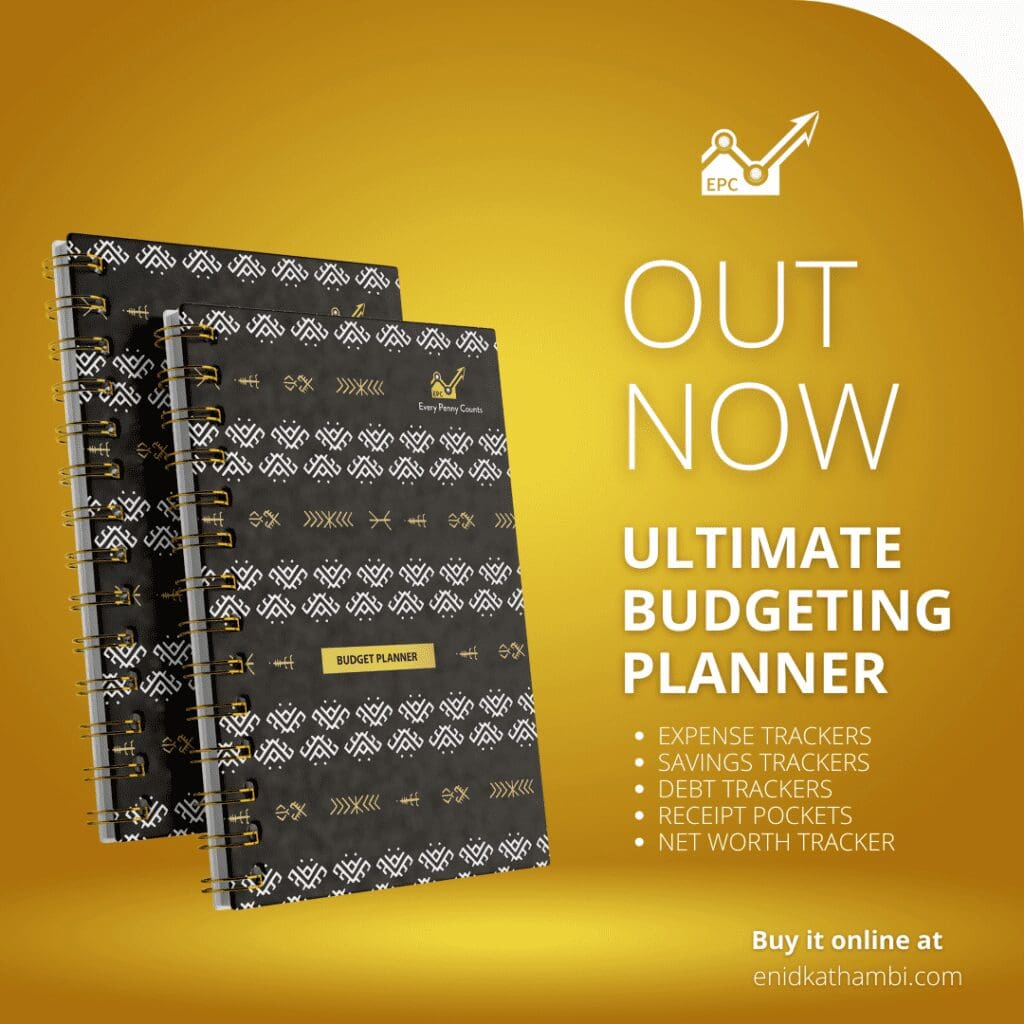
Quick Start Emergency Fund: Step 1 to Financial Success
Are you living paycheck-to-paycheck? Possibly drowning in a never-ending cycle of debt? Would you get by for a month or two if you lost your job? Or, if you had an unplanned and pressing expenditure, are digital loans or borrowing funds from your friends and family the solution to meet that expense?
That’s what emergency funds are for — to meet your unexpected expenses without liquidating your investments or getting deeper into debt. But building an emergency fund takes time, effort, and sacrifices.
For many people, having the bare minimum of a 3-month emergency fund will take several months. Plus, building an emergency fund is not usually the only pressing financial goal at that moment. You may have debt and want to get out of that cycle ASAP. Or school fees to pay. Not forgetting the daily costs of utilities and life expenses.
So, how do you balance having an emergency fund without pressing the pause button on all other goals?
That’s where starting small and focusing on having a set minimum amount in your safety kit comes in. Dave Ramsey has a name for this sort of emergency fund, the quick start emergency fund. What is it, and why is it necessary?
Let’s find out!
The Quick Start Emergency Fund
A quick start emergency fund is just that — an emergency kitty account you try to set up as quickly as possible with a certain amount that gives you some sort of cushioning against life surprises. This step is ideal if you are starting your financial planning journey, are drowning in debt, or do not have an emergency fund. It is the secret to working on getting out of debt or building a full emergency fund without worrying about unexpected expenses.
Remember that the first key steps in financial planning involve having an emergency fund with at least 6-months of living expenses and getting out of debt. However, if you are drowning in debt, building a 6-month emergency fund is difficult without proper planning. Worse, a minor inconvenience will probably lead to accumulating more debt. With a quick start emergency fund, your focus will be building this kitty first. Then, you can focus on paying off all your debt except for your mortgage with some peace of mind.
What if you don’t have debt and are starting your financial planning journey? If you are debt-free, congratulations! But an emergency fund is still essential. If this is you, you are probably focusing on other financial goals, like investing. But what happens if you have unexpected expenses? Would you liquidate your investments or borrow money? Focusing on building this fund first will allow you to cushion yourself against such moves.
Related read: 5 Quick Steps to Rebuild Your Emergency Fund
How Much Do You Need for Your Quick Start Emergency Fund
I recommend having a quick-start emergency fund that can cover at least one or two months of your living expenses. If possible, make it three months, which is the least you should have in an emergency fund anyway. In terms of a fixed number, that figure should range between Ksh. 50,000 to Ksh. 100,000 ($500 to $1,000), and you should aim for the higher number.
If you are using your living expenses as a benchmark, have an estimate of how much you spend on the necessities, e.g., rent, transport, food, water, power, internet, airtime, etc., Then, multiply that number by 2 or 3 to get the amount for these specific months.
Next, you must embrace budgeting to help you manage your finances like a pro. You must know these figures to help you create a reliable budget;
1. Monthly Income
It includes all money you bring from each and every income source, including side hustles, commissions, bonuses, interest payments, dividends, a share of profits from your business, or child support.
As long as it’s a cash inflow to your account. The income will be the top item on your budget and shows you how much you will be working with.
2. Regular Bills and Expenses
These are payments you have every month, including rent, transport, food, etc.
3. Irregular Bills and Expenses
Think of expenses you incur once or twice a year, like insurance premiums, school fees, holiday costs, birthday expenses, etc. These might not be regular and monthly, but you must budget and save for them every month. Planning and saving for them in advance saves you from coughing up a lumpsum of unplanned money. Or borrowing to meet the expenses. Plus, the more time you have to save, the lower your monthly contribution to each category.
For instance, we are in March, and you need to save Ksh. 100,000 ($800) for the December holidays. If you start now, you should be contributing Ksh. 10,000 ($80). But if you start mid-year, you’ll have to budget for a higher amount, about Ksh. 16,667 ($133).
Shop our available budgeting planners and spreadsheets
Budgeting and Funding Your Quick Start Emergency Fund
Now that you have a figure, the next step is to fund it as quickly as possible. Since you are starting out your financial journal, the first step is to choose a budgeting method. For this step, I recommend using the zero-based budget system. With this method, we are aiming for zero balance of unaccounted money from your monthly income. That means you will be accounting for every single penny you bring in.
By the end of this exercise, you will have a breakdown of where you expect your money to go and how much each category takes up. Additionally, you are able to note areas that require tightening up, especially if your budget tips to the negative side (spending more than you earn). That’s the money you are looking for to fund your quick start emergency kitty. Remember that we want that account full ASAP.
You’ve got your budgeting tool ready, right? Let’s start budgeting;
Step 1: Adding Up Your Income
Start by capturing your income categories to get your estimated monthly income. As mentioned earlier, you must capture every cash inflow that comes into your checking account/s as income.
Step 2: Less The Basics
Remember the necessities you highlighted? These are spending categories you cannot live without — otherwise referred to as your needs or non-discretionary expenditure. They will vary between individuals, so be sure to capture figures that match only your situation.
Here are the common necessities;
- Shelter – the rule of thumb is that this category should take up to 25% of your income. If you are spending more than this, it’s time to downsize, cut spending from other categories, or bring in more income. The costs in this category can be in the form of rent, mortgage payments, homeowner’s/renter’s insurance, and property taxes. Why is insurance here? Because if anything were to happen, e.g., robbery or fire, you want to have the backing of an insurance company to recover rather than catering to these costs from pocket. Yes, there might be deductibles. But if you are well-insured, you have less to be worried about, and you can focus on bettering your financial position.
- Food – including groceries and other foodstuffs. Keep in mind that this is for the necessary food items and for food made at home. Not takeout. Is the figure too high? You can lower it by trying to shop in bulk, using a meal plan, scouting for discounts, and shopping with a list to avoid impulse purchases.
- Utilities – from your power and water bill to gas and internet. However, having the internet as a necessary utility here will depend on one’s situation. If you are working from home, especially in the current age, it’s a necessity. With that being said, you do not have to go for a high-speed package you can barely afford. Settle for a package that allows you to stay connected and work without taking too much money.
- Transport – take into account how much you spend on fare or fuel for your vehicle. These costs change, given the fluctuating price of fuel. What you can do is work with an average of the last 3 months. While at it, focus only on transport costs to your place of work or for business purposes, not road trips and fun getaways. In addition, if you own a car, remember to factor in extra expenses not covered by your auto insurance, e.g., oil changes and maintenance costs.
- Insurance – besides homeowner’s/renter’s insurance, you must think of other areas of your life that require cushioning. Insurance policies are a must-have in every step of your financial plan. The necessary policies will depend on one’s situation, but the basic policies to have are health, life, and auto (if you own a car). Keep in mind that insurance policies are a key risk management tool in your personal finance journey, so you should not be focusing on cutting off your policies to save money. However, you can reduce how much you spend by looking for a more affordable but reliable insurer and taking up a term life instead of a whole life insurance policy.

Step 3: Less Other Expenses
How are you doing so far? Is your budget keeping up with your income? Have you figured out key areas that require extra work? Great! Let’s keep going, though. We have a few more things to work on.
- Health – there are health costs your medical coverage might not cover, e.g., out-patient costs if you only have in-patient coverage, regular medication, supplements, and first-aid supplies. What are the average expenses for each of these? Add that to your budget. Because you cannot skimp out on these, you can look for places to shop at a discount without compromising the quality of the items you are purchasing.
- Child care – e.g., daycare and babysitter costs during working hours, not fun and party hours. At this step, fun and parties are paused until you have enough for your emergency fund.
- Entertainment and personal spending – examples of these are entertainment subscriptions, road trips, clothes, movies, restaurants, takeout, alcohol, etc. The spending on these should be at a minimum. I know it will be hard to let go of things you’ve gotten used to. However, it pays in the long run, and I speak from experience.
Step 4: What to Do with Debt
If you have debt, the plan is to pay the minimum amount for every debt. Have a list of all your debts, the due dates, and the minimum payments. It will help you identify all your obligations, how much you owe, and when each debt is due. It also puts things in a better perspective. You will also need to set up calendar reminders or automatic deductions to avoid delayed payments, which could lead to late fees and penalties.
Again, you are trying to set up your quick start emergency fund, so every extra penny should fund this account, not pay off the loans.
Step 5: Pause All Investments
Yes, all investments have to come to a halt, from buying shares and government securities to mutual funds contributions and purchasing properties. As covered in this article, investing is a long-term wealth-building strategy with risks. And part of the risk is losing your capital. That’s why you save and pay off debt first before investing. Because you also want to avoid being in a position where you are liquidating your investments for minor challenges that can be covered by your emergency fund. Or losing all the money you have put up in investments.
One tricky area of investing is retirement accounts. Should you pause this? It will depend on one’s situation. If your employer has a retirement plan with matched contributions, you’ll have little legroom to get out of it. You can continue with these contributions, but only at the minimum agreed-on amount and no additional voluntary contributions. If it’s an individual plan, you can press the pause button until you have an emergency fund. It’s disheartening to be losing on tax deductions and interest earnings, but I have missed payments just to ensure my emergency fund is reliable.
Ready to Fund Your Starter Emergency Account?
Congratulations, you are now ready to start budgeting and getting your quick start emergency fund up and running. The road ahead is daunting. It takes time to get used to budgeting and saying no to lifestyle choices you’re already used to. But the reward is worth the struggle. You will have a better relationship with your money and a more stable financial position.







